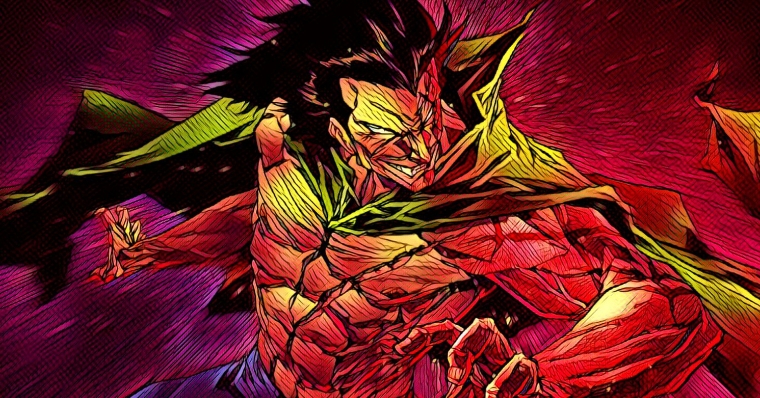The live-action adaptation of "One Piece" has sailed onto Netflix. If you're a newcomer exploring this epic saga solely through this medium, you've likely got a treasure chest of questions popping into your mind. If Vice-Admiral Garp is the anchor of a grandfather to Luffy, then who's the guy in the middle—aka, Dad? This familial mystery does not unravel quickly in the original manga. Fans had to wait until the thrilling conclusion of the Enies Lobby arc for the curtain to lift. And what's revealed is nothing short of eye-opening: Luffy's father is Monkey D. Dragon, the esteemed and elusive leader of the Revolutionary Army and, drumroll, please—the most wanted man on the globe. Intrigued? Sit tight because we're about to sail through 10 head-turning facts about this enigmatic figure and the Revolutionary Army he commands. Ready to unlock some secrets of the "One Piece" world? Let's set sail.
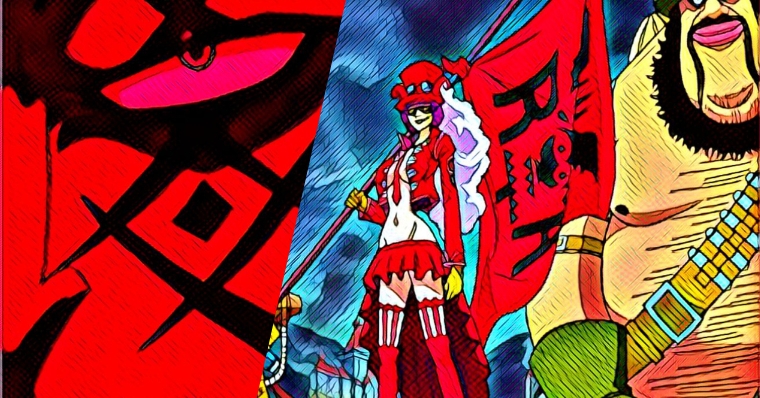
10 – The Revolutionary Army
he early years of Monkey D. Dragon remain shrouded in a veil of enigma. But it's no secret that he's the son of the distinguished Vice-Admiral Monkey D. Garp and first opened his eyes to the world in the Goa Kingdom some 55 years before the current events unfolding in "One Piece." It's also worth mentioning that a quarter of a century ago, Dragon witnessed the shocking public execution of the legendary pirate Gol D. Roger. But let's rewind a bit. Once upon a time, Dragon led an outfit known as the Freedom Fighters. Far from a lavishly funded military juggernaut, this group was, to put it mildly, financially strapped. They were the underdogs, the rebels without enough coins in their coffers. Dragon even went so far as to approach Vegapunk, a scientist whose intellect was as towering as the world's tallest skyscrapers. The proposition was simple: "Join us, and together we can create something monumental." Vegapunk, however, turned down the offer. He was practical. The Freedom Fighters' budget just couldn't accommodate his grandiose visions for scientific innovation. Then came the Ohara Incident, a cataclysmic event that would shake Dragon to his core and transform his ambitions into concrete resolve. For Dragon, the world had displayed an unacceptable level of cruelty and authoritarian overreach. Something had to change. Thus, he swore an oath—a pledge to form an army that could not just resist but actively prevent the kind of atrocities enacted by the World Government. And so, that very same year, the pieces started falling into place. Dragon teamed up with Emporio Ivankov and Bartholomew Kuma to lay the foundational bricks for what would soon become an organization of insurmountable impact: The Revolutionary Army.
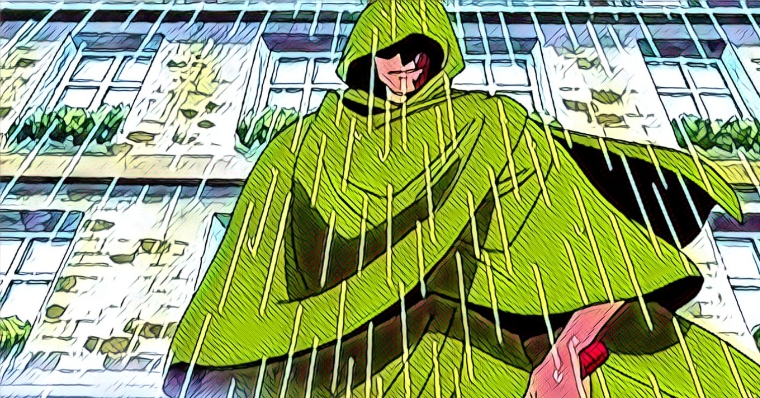
9 – First Appearance
If you've been riding the "One Piece" wave from the get-go, you'll know that the Revolutionary Army was a mysterious absence in the early sagas, especially the East Blue arcs. It was almost as if they were ghost entities, whispering from the shadows while Luffy and his Straw Hat Crew gallivanted their way into the Grand Line. It wasn't until the dust settled on the skirmishes at Arlong Park that the Revolutionary Army decided it was high time to step out from behind the curtain and into the limelight. Now, prepare yourself for a truly serendipitous moment: the first face to represent the Revolutionary Army in "One Piece" was none other than its enigmatic commander, Monkey D. Dragon. Yes, the same Dragon we've been talking about. Talk about keeping it in the family, right? He chose to make his grand entrance in Chapter 100 of the manga and Episode 52 of the anime, both landmarks in the Logue Town arc. If you were there for those first moments, you'd recall how he swooped in, as elusive and intriguing as ever, without a single clue about his real connection to Luffy. It was like watching a magician step onto the stage, dazzling us with his charisma but not yet revealing the secrets up his sleeve.
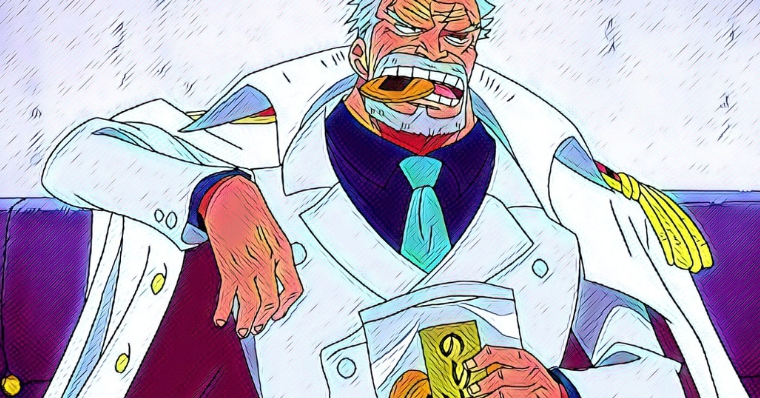
8 – The Complicated Relationship with Garp
Family dynamics can be weird, right? When it comes to the Monkey D. family, "weird" might just be an understatement. Let's talk about Monkey D. Dragon and his father, Vice Admiral Garp, who have a relationship that's as convoluted as one of those high-level Sudoku puzzles you never seem to finish. It's not like they've been captured on screen breaking bread at a family reunion. There hasn't been a single moment where the two are seen directly engaging with each other. But do we get glimpses into the emotional tornado swirling between them? Rewind to a flashback, and you'll see Garp with his blood at a boil, fuming like a kettle over the fact that his own son, Dragon, chose to be a revolutionary. Can you visualize a man so incensed that he goes Mike Tyson on a naval ship? Garp punched that vessel as if he could dislodge his feelings through his fists. Fast forward a few years, and you'll see a different Garp—a much chiller version, actually. The man's practically nostril-deep in nonchalance, casually discussing Dragon's criminal exploits with Luffy, his grandson. He's gone from destructive anger to practically mining for gold in his nose as he dishes on his revolutionary son. It's an emotional 180 that makes you go, "What happened here?" But wait, there's more! The emotional needle swings again, albeit subtly. Ever the cryptic character, Garp hints that Dragon's reason for appearing in Loguetown was to witness Luffy set sail for the Grand Line. The plot thickens when Dragon ends up saving Luffy during his face-off with Smoker. What's intriguing here is Garp's subsequent surprise at the fact that Dragon didn't bother introducing himself to Luffy. It's as if the vice admiral was teasing us with a family narrative that could've been but never was. As for Dragon's sentiments about his dad? Still as mysterious as ever. However, here's a tidbit that speaks volumes: Dragon chose to leave his son, Luffy, under Garp's care. You don't do that unless there's a fraction of trust, right? This trust, juxtaposed with the profound silences and unanswered questions between father and son, adds layers of complexity to their relationship, begging the question: What really goes on between these two strong-willed figures in the "One Piece" universe? It's a riddle wrapped in an enigma, layered with emotional tension that could snap a tension wire. So, until we get more tea on this duo, their relationship remains a spectacular cliffhanger, dangling us by our curiosity.
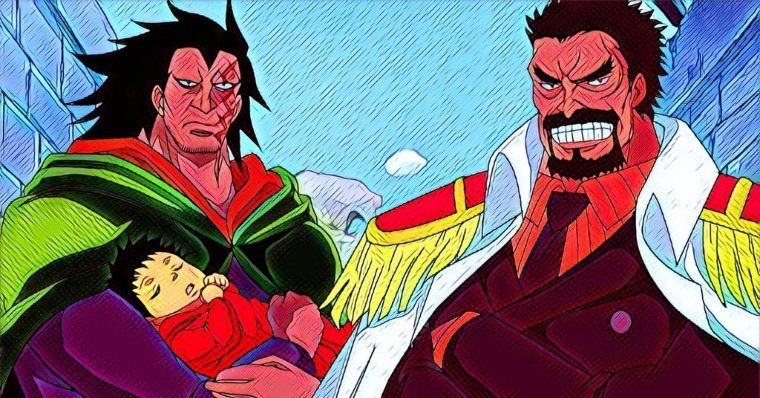
7 – The Father-Son Enigma: Dragon and Luffy
Talk about a father-son relationship with more mystery than a locked treasure chest at the bottom of the ocean! We're diving into the incredibly curious connection (or lack thereof) between Monkey D. Dragon and his son, Monkey D. Luffy, two key players in the world of "One Piece." Let's get the basics out of the way: Dragon and Luffy's relationship is basically non-existent. Dragon dropped Luffy off with Grandpa Garp when the kid was still practically swaddled in baby blankets. They're so estranged. Luffy didn't even know he had a dad until he was 17 years old. He found out he was the son of the most wanted man in the world and reacted with the surprise of someone discovering they had a secret stash of snacks they had forgotten about. Now, let's add a sprinkle of irony to this already intriguing story. Luffy was in the dark about who his father was for almost two decades and was equally oblivious to Dragon's not-so-small-time role as the leader of the Revolutionary Army. Even after his crew spilled the beans, Luffy didn't suddenly develop an urge to make up for lost family picnics. It seems there are no long-lost father-son bonding trips in the cards here. What's fascinating is how Luffy is perfectly cool with people knowing he's Dragon's offspring but doesn't appear to care about what his dad is up to or even his reasons for leading a global insurrection. And just when you think this couldn't get any more enigmatic, Emporio Ivankov chimes in with some food for thought. Ivankov observes that Luffy and Dragon share certain traits—tenacity and strength, for instance. It's as if the apple hasn't fallen far from the tree; it's just rolling in a totally different direction. Adding another layer to this already dense mystery cake, both Luffy and Dragon and Grandpa Garp share an intense loathing for the Celestial Dragons for their horrendous treatment of humanity. It's like a multi-generational disdain club, each with his own agenda but connected through a common enemy. So, where does this leave us? In a swirling vortex of questions and bewilderment, that's where. Dragon and Luffy's relationship, or the enigma of it, is like one of those abstract paintings where every time you look, you see something new, but you're still not sure what it's supposed to mean. It's a fascinating dynamic, awash in complexities and missing puzzle pieces. One thing is for sure: This storyline is begging for resolution, but until that day comes, we're all just speculating amidst the fog of the unknown.
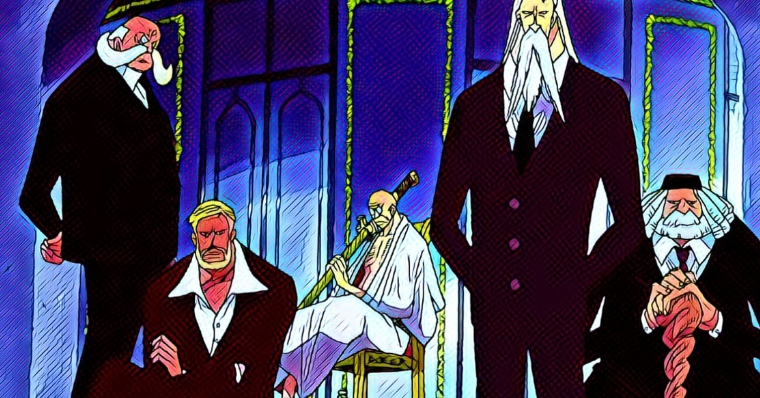
6 – The Tightrope Walk with The World Government
If there were a global leaderboard for "People the World Government Really, Really Doesn't Like," Monkey D. Dragon would undoubtedly be at the top. In the intricate tapestry that is "One Piece," he's not just a stitch out of place; he's a whole new pattern. And let's not forget that Nico Robin once candidly pointed out how the vast majority of individuals and organizations—pirates, you're on this list—tend to steer clear of provoking the World Government. The spotlight's warm and all, but not when a barrage of cannonballs follows it, if you catch my drift. But Dragon? He's singing a different tune altogether. It's as if he's telling the world, "Forget the status quo. I'm here to redefine what it means to challenge authority." While most people are satisfied with playing it safe, Dragon and his Revolutionary Army are purposely doing things that make the World Government want to rip their bureaucratic paperwork in frustration. Dragon isn't just labeled a revolutionary; in the eyes of the World Government, he's a one-man apocalypse for their brand of justice and governance. The World Government genuinely believes that Dragon's ideals and objectives have the potential to dismantle their entire foundation. When an institution that's been around for centuries thinks you're a problem, you've got to admit that's some serious gravitas. For now, at least, it seems the World Government is Dragon's only confirmed nemesis, which is saying something in a world teeming with chaos. Now, let's throw Luffy into this spicy mix. Merely being Dragon's offspring elevates Luffy to a level where he's in the crosshairs of the World Government's 'justice.' Whether Luffy likes it or not, he's inheriting a legacy that paints him as a person of interest. Just by his DNA, Luffy is thrown into a category reserved for those who seriously rattle the World Government's cage.
5 – The Mystery of the Secret Lair
In the riveting world of "One Piece," it's all cloak and dagger regarding the secret hideaways of Monkey D. Dragon and his Revolutionary Army. Initially, the hidden fortress was Baltigo, a place so elusive that even the mighty World Government couldn't pinpoint it on a map. We're talking about a spot so far off the radar it made Where's Waldo look like child's play. Enter Jesus Burgess—this character couldn't resist spilling the proverbial beans, could he? After revealing Baltigo's coordinates to the infamous Blackbeard, let's just say the place won't be featured in any travel brochures anytime soon. It got absolutely trashed, demolished, and whatnot. Now, the Army's strategic HQ has relocated to Momoiro Island, or as it's more colloquially known, the Kamabakka Kingdom. But is this their forever home? The Revolutionary Army isn't exactly the type to settle down. A group that revels in instability isn't about to throw a housewarming party and call it a day. After all, you don't build a rebellion by getting too comfortable, do you?
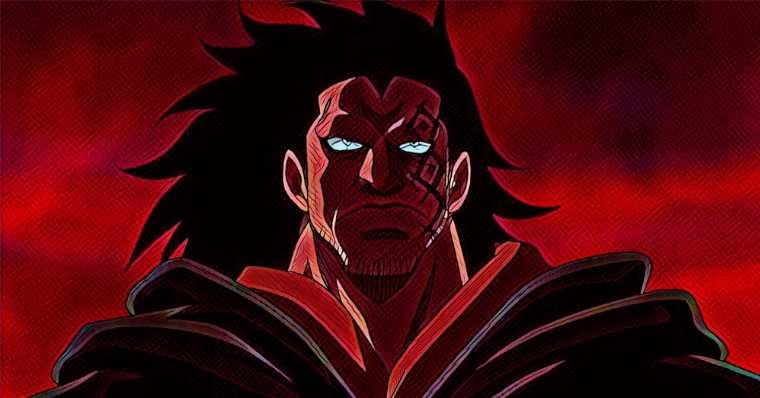
4 – The Enigma of Potential Powers
When delving into the "One Piece" universe, few characters rival the enigma that is Dragon in the world of fan theories and speculative debates. Seriously, the chat rooms are ablaze. The big question hovering like a storm cloud? Does Dragon have Akuma no Mi powers or not? For years, there's been this pulsating theory that Dragon might just control the wind. This isn't plucked from thin air—no pun intended. Every time Dragon makes a rare appearance outside his erstwhile sanctuary of Baltigo, a storm seems to tail him like a faithful pet. Case in point: When Dragon rescued Luffy in Loguetown, the sky growled, and the clouds churned. Again, during the execution of Gol D. Roger, the atmosphere was nothing short of electric; you guessed it, he was there. Even the Goa Kingdom wasn't immune to the atmospheric quirks when Dragon was in town. It's as if Mother Nature throws a parade in his honor every time he steps out. Coincidence? Maybe. But let's not overlook Baltigo, his original lair. That place was windier than a politician on a debate stage. Could all this gusty activity around Dragon be mere chance, or is something blowing in the wind that we haven't grasped yet?
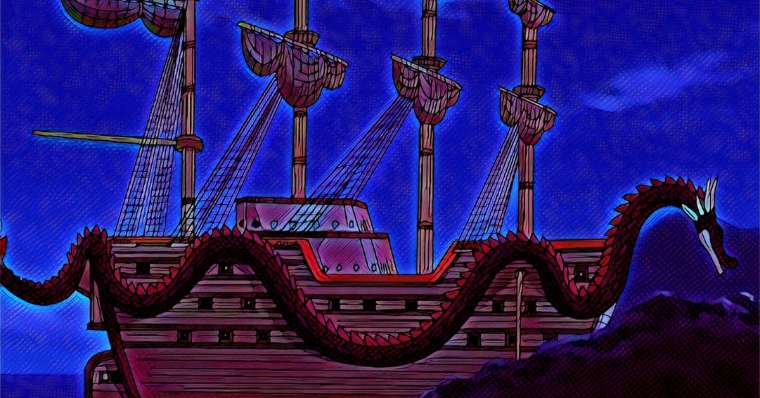
3 – The Enigmatic Vessel: Wind Granma
Within the sprawling organizational web that makes up the Revolutionary Army, having a fleet of ships for transportation seems like a no-brainer. However, not just any ship could serve as the flagship for this rebellious armada. The boat that likely earns that esteemed title belongs to none other than Monkey D. Dragon himself. Known as the Wind Granma, this mysterious vessel sails into our awareness in Chapter 587 of "One Piece" (and makes its animated debut in Episode 502). Now, let's talk about aesthetics for a second because this ship is far from ordinary. The Wind Granma showcases an intricately designed dragon figure that stretches from bow to stern. It's as if Dragon decided to christen his ship by giving it an elaborate dragon tattoo, thus paying homage to his own name. But this design choice isn't just about visual spectacle; it's a narrative whisper hinting at the complex character of its owner. The ship's moniker, "Wind Granma," adds yet another layer to the already intricate tapestry of theories swirling around Dragon's mysterious powers. It's like the universe—or, at least, the creators of "One Piece"—is teasing us again about Dragon's intimate relationship with the wind. You have to admit, naming your ship "Wind Granma" isn't something you do on a whim. It's as if the name itself serves as a coded message or a metaphorical breadcrumb left for fans to gobble up and ponder. If you're tracking along, you'll recognize this as another intriguing connective tissue linking Dragon to wind-related phenomena. It may not be a slam-dunk confirmation, but it's enough to send speculative shockwaves through the fanbase. In a world full of turbulent seas and unpredictable weather, the name "Wind Granma" serves as yet another cryptic clue, prompting an endless spiral of thoughts and fan theories.

2 – The Revolutionary Army's Flag
For the longest time, the flag of the Revolutionary Army remained a clandestine emblem, shrouded in secrecy throughout the sprawling narrative of "One Piece." It's like a hidden easter egg that you know has significant implications, but the creators kept it veiled from our prying eyes for some reason. Finally, though, the enigmatic Eiichiro Oda pulled back the curtain during the Reverie arc, giving us the first full glimpse of this clandestine standard when the commanders of the Revolutionary Army took center stage. The flag itself is a masterpiece in visual storytelling. Drenched in a bold red hue, it features the commanding visage of a dragon's head, accompanied by a pair of wings artfully etched into the fabric. And if you appreciate the subtleties, the letters' RA' are discreetly embossed, serving as a not-so-secret handshake that clues us in on its allegiance. It's not just a flag; it's a symbol, a visual codex, that lets us into the ethos and identity of the Revolutionary Army. But, before the storyline took a temporal leap forward, there was also a precursor to this flag—a triangular red banner that held the spot as the Revolutionary Army's earlier representation. This flag evolution is like a nod to the Army's growth and the unfolding complexity of its mission. It reminds us that symbols, too, can evolve—reflecting shifts in ideology, leadership, or perhaps even undisclosed secrets.
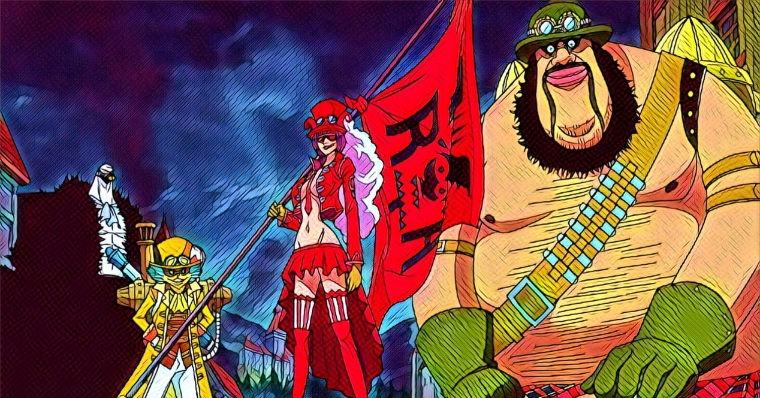
1 – The Command Hierarchy: Big Names in The Revolutionary Army
Let's talk about the hierarchical ladder of power players in the Revolutionary Army. At the pinnacle of this pyramid of command stands Monkey D. Dragon—the Supreme Leader and a figure swathed in more mystery than a whodunit novel. His reputation precedes him; he's the kind of leader whose very presence demands attention and, dare I say, a smidge of awe. Following closely on his coattails is Sabo, the Chief of Staff, who's not just any second-in-command. He's a man of action, a fighter whose deeds reverberate through the plot like a power chord in a rock anthem. Then, behold the Fab Five—the Five Commanders that are next in line regarding the chain of command. Let's break it down: Emporio Ivankov rules the roost in the Grand Line, while Karasu takes charge of North Blue. On the other hand, Belo Betty commands the East Blue, Morley reigns over West Blue, and Lindbergh has his eyes on the South Blue. Each commander brings a unique flavor to the table, like they're the ensemble cast of an award-winning drama, and their regions are the backdrops against which their compelling stories unfold. Now, about Bartolomeo Kuma. His rank is somewhat of an enigma. While he's not exactly a top-tier player, his exact place in the Revolutionary Army is, as of now, as clear as mud. But, in a storyline that thrives on complexity and unpredictability, who can blame us for being on the edge of our seats? The international commercial and critical acclaim the series has garnered isn't just because of its mind-bending plot twists or eye-popping action. Much of it has to do with these compelling characters—many of whom have helped the manga volumes shatter printing records in Japan like a bull in a china shop. In this intricately woven narrative, it's not just the story arc that captivates; it's also the individual arcs of these vibrant personalities, each with roles that contribute to the Revolutionary Army's ever-evolving tapestry. The diverse power dynamics within this faction alone could be a study in leadership, loyalty, and charisma that draws millions to explore every nook and cranny of the "One Piece" universe.










